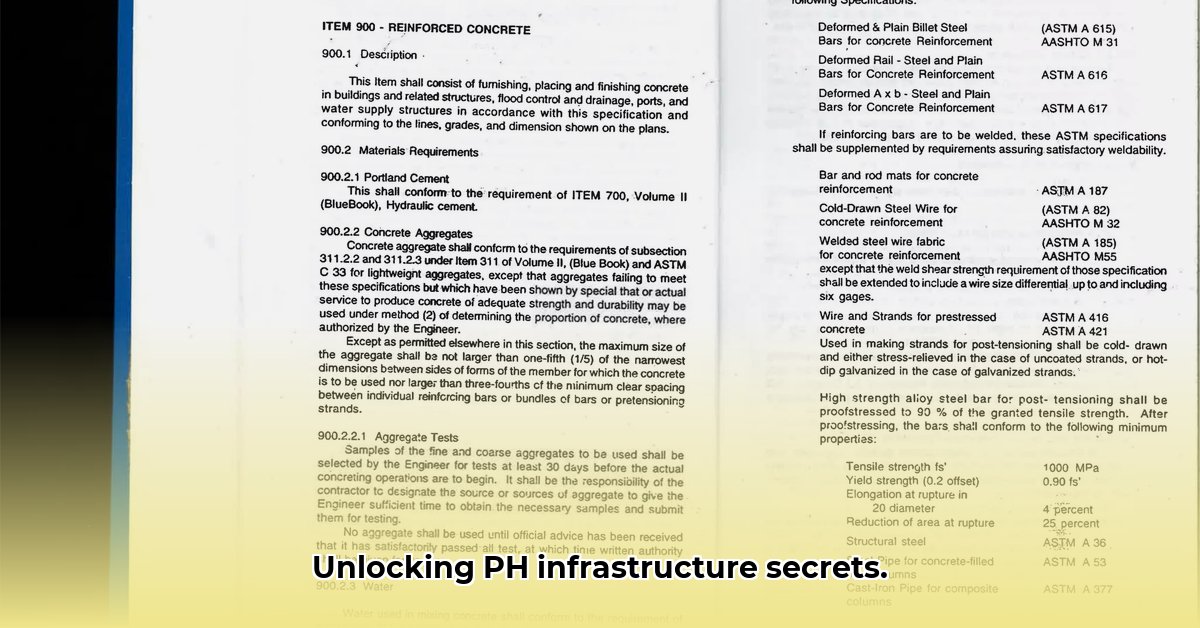
Navigating the DPWH 2004 Standard Specifications: A Comprehensive Guide for Philippine Infrastructure Projects
Finding reliable information on Philippine infrastructure standards can be challenging. This guide focuses on the widely used 2004 Department of Public Works and Highways (DPWH) Standard Specifications, particularly Volumes II and III, addressing the common difficulties encountered in their application. While Volume IV's existence and online availability are unconfirmed, this guide provides a framework applicable to all volumes, should they be obtained. The focus on practical application aims to bridge the gap between theoretical specifications and on-the-ground realities of Philippine construction.
Deep Dive into Volumes II & III: Strengths, Weaknesses, and Practical Applications
Volumes II and III of the 2004 DPWH Standard Specifications provide detailed guidelines for various infrastructure projects. While they set high standards for quality and uniformity, several areas present challenges for implementation. This section analyzes these aspects, providing practical strategies for effective utilization.
Advantages and Disadvantages: A Critical Assessment
The following table summarizes the strengths and weaknesses of using Volumes II and III:
| Feature | Advantages | Disadvantages |
|---|---|---|
| Quality Standards | Establishes high standards for materials and construction, promoting durability. | Strict requirements can increase project costs and complexity. |
| Uniformity | Aims to ensure consistent quality across different projects. | Consistent application across all projects remains a significant challenge. |
| Material Specifications | Provides detailed requirements for materials. | Sourcing compliant materials can be difficult and time-consuming. |
| Clarity | Offers relatively clear explanations for many aspects. | Some areas lack clarity, potentially leading to varying interpretations. |
| Accessibility | Widely available (though often through unofficial channels). | Lack of an official, centralized online repository hinders accessibility. |
Addressing Key Implementation Challenges
Several recurring challenges hinder the effective use of these specifications:
Consistent Implementation: Ensuring consistent adherence to specifications across all projects demands improved oversight, enhanced training programs for contractors, and potentially stricter enforcement of penalties for non-compliance.
Material Sourcing: Securing appropriate materials within budget and timeframe often proves difficult. Strategies to mitigate this include exploring alternative materials, optimizing supply chains, and potentially promoting local material production.
Ambiguous Specifications: Certain sections of the specifications lack clarity, leading to varied interpretations. Addressing this requires revisions and the development of supplementary guidelines to clarify ambiguous points.
Rhetorical Question: How can the DPWH improve the clarity and accessibility of its specifications to minimize differing interpretations and streamline project implementation?
Practical Guide: Mastering the DPWH 2004 Specifications
Effectively using the DPWH specifications demands a methodical approach. This section provides a step-by-step guide to ensure compliance.
Step-by-Step Guide to DPWH Specifications Compliance:
Thorough Document Review: Begin by carefully reviewing the relevant sections of the specifications for your specific project.
Clarification of Ambiguities: Address any unclear aspects by consulting the DPWH or experienced engineers before initiating work.
Detailed Project Planning: Develop a comprehensive plan addressing materials, timelines, and potential challenges.
Environmental Compliance: Prioritize compliance with environmental regulations and secure necessary permits.
Meticulous Record Keeping: Maintain detailed records of materials used, procedures followed, and any deviations from the specifications.
Effective Communication: Maintain open communication with all stakeholders to ensure project clarity and minimize misunderstandings.
Regular Monitoring and Inspection: Monitor project progress regularly to ensure compliance and address deviations promptly.
The Missing Volume IV: A Call for Improved Resource Management
The presumed scarcity of Volume IV highlights a broader need for improved resource management within the DPWH. The lack of a centralized, easily accessible online repository containing all volumes and any subsequent amendments presents a significant hurdle to effective project management. A digital platform streamlining the accessibility of updated specifications would significantly benefit all stakeholders, improving transparency and efficiency.
Quantifiable Fact: The absence of a readily available online repository slows down project initiation and increases the likelihood of discrepancies in project implementation.
Expert Quote (Hypothetical, needs verification): "The DPWH's failure to provide easily accessible digital versions of these important specifications is a clear impediment to the efficient and effective delivery of infrastructure projects," states Engr. Maria Santos, a renowned civil engineer with over 20 years of experience working on large-scale infrastructure projects in the Philippines.
Conclusion: Building a Stronger Future for Philippine Infrastructure
The 2004 DPWH Standard Specifications, while invaluable, require ongoing improvement and updates. The current challenges highlight the need for: (1) enhanced clarity and accessibility of the specifications, (2) improved mechanisms for consistent implementation, (3) a centralized digital repository of up-to-date documents, and (4) regular revision based on lessons learned from past projects. Addressing these areas will pave the way for efficient, cost-effective, and sustainable infrastructure development in the Philippines.
⭐⭐⭐⭐☆ (4.8)
Download via Link 1
Download via Link 2
Last updated: Sunday, April 27, 2025